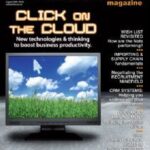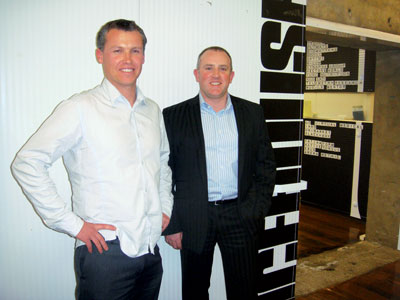Bridging the digital divide
Digital paper’ has evolved to become the new document management and storage system, as the possibility of the paperless office returns. Kevin Kevany has more.
|
The much-heralded and long-promised ‘paperless office’, which followed closely on the heels of the now forgotten four-day working week, is finally showing signs of materialising (or should that be ‘de-materialising’ into data ‘scrapes’ and even data ‘grooming? ) The season for “added-value services” being the differentiator is over, since they are now regarded as mere basics. Certainly the constant jibes of ‘forest-shredder’, ‘environmental heretic’ and the like have had their influence. And the knowing smiles that follow any businessman staggering down the airplane aisle with loads of paper documents indicate what was once a measure of intellect and responsibility now has the stigma of a Luddite. Remarkably, one of the forces now driving the change to a paperless environment are the very companies you would expect to have had to be dragged screaming and kicking to their own demise: respected names like Fuji Xerox, HP, Konica Minolta, Epson and others. The mantra, it seems, is that while paper still has its place, efficiency (read cost-saving) rules; waste is anathema (ten percent of printed material is never even collected); and document delivery, manipulation and control are the new tomorrow – today. Following on the IT splurge of the past five years, where raw Giga-horsepower, never-ending-horizon monitor screens and glorious colour renditions, once captivated and inflated SME owners and managers, they eventually looked up and said: “So what? There’s ultimately a limit to how much trolling of the Net can do for my business”. At about the same time, their printer/copier/scanner supplier came knocking on the door with a bag full of ideas, strategies and suggestions on how the integration – of what until now had been the tag-end of the process with all the investment in IT – could be harnessed to deliver recession-calming savings in equipment, time and energy savings, while creating slick and relevant document flow. Some came calling with the promise of an “audit” of processes and equipment. Others proffered the opportunity to simply create their own advertising and sales materials, with promised savings. Another had effectively miniaturised their success in the giant corporate world to meet SME needs. And one even arrived with refurbished equipment with new product guarantees, thereby achieving a doubling in sales. Do not think though that the print, imaging and storage industry segment has gone soft, for one minute. Nika Maltseva, marketing manager for Epson New “So we see a continuing need for paper-based information within the office because it is still the most reliable form of information storage. “Creating more efficient and productive office processes is always worthwhile, but to attempt to go completely paperless will have drawbacks. There will always be a need to interchange between paper and non-paper based information – scanning incoming paper documents and printing received soft (emailed) documents will be critical to increasing office productivity,” says Maltseva. “What is chosen for soft storage and what is kept in hard copy storage will need to be decided on the relative value of the information they contain. It is simplistic, though tempting, to say everything will be used and stored in soft copy, because that is a high risk option for high value information contained in contracts, title deeds, and so on. Documents like these need to be retained in printed form.” Industries with a high volume of transactions that have short-term value only – retail, credit cards, transport, etc – are very much the target for paper reduction, because there is little value in storing their records for a long time. But the professions – such as legal, accounting and engineering – are expected to maintain a greater reliance on the reliability of paper-based records although, because they have been largely unaffected by the economic downturn, they are very much in the sights of the super-quality colour copier/printer vendors. Taking the digi-revolution forward in this sector is Fuji Xerox’s SMARTConnect for Apeos which enables multifunctional devices (MFDs) to connect seamlessly with Microsoft Office SharePoint Server, “fully-bridging the physical and electronic world by making scanned documents fully editable with standard office software”. That means users need only scan a typed letter, and SMARTConnect will convert the hard copy into a Word document available on the SharePoint Server for editing. “Integrating our ApeosPort office devices with Microsoft Office SharePoint Server improves the functionality for the user and ensures a good return on their investment in two leading products,” says Rod Vickers, solutions product marketing manager for Fuji Xerox, who has some very definite ideas on where paper fits and new technology interacts. “About 40 percent of the information coming into a typical company is still paper-based. So companies are trying to work out how to get that information into their electronic workflows, quicker and to the point. “Once it is processed, if the customer requires it, we can actually ‘scrape’ information off say a printed form and get it into an electronic format, and add metadata (data-on-data) into the scanned image. If you have a student number or an invoice number, we can read that and process the document appropriately, via that tag.” Putting the ‘smarts’ into forms According to Vickers, Fuji Xerox is pushing to “put ‘smarts’ back into forms” to enhance communications and workflow, using tried and tested methods like bar-coding – a system successfully adopted by Vodafone for their customer billing. “Even small companies today have databases of clients, which are managed inside the company, or at least ‘groomed’.” The whole process, the sending out of the document, the information on it and the response from the customer on that document is automatically updated onto the database making it current and additionally valuable. An InfoTrends study had found that organisations perceived they spent an average of three percent of their annual revenues on printing, copying and fax-related costs. In fact, overall document expenditures (including hardware, supplies and ‘people’ costs) averaged six percent of annual revenues across all sectors. Many of the largest cost components of document output, it seems, are often hidden and grow over time. Cue Josh Byers, marketing manager of Konica Minolta, which now styles itself as a leading printer and document solutions company. |
“All businesses are examining expenses and looking at how they can cut costs. Printing and document solutions is one such cost – but it can be hard to work out how to streamline. As with IT, data and telephony, it’s important to bring in the experts to conduct a thorough audit. “An audit will provide your business with analysis of where you are now and highlight where improvements can be made. The key objectives are to identify areas that can be streamlined; show where steps can be removed from a task function; and where costs and print wastage can be reduced. And ensure staff are maximising the available technology,” says Byers. He believes, as with toll calls and Internet usage, SME managers must have control over their in-house printing. “Document technology and software can now identify the individuals using a printer/s, what they are printing and the relevant costs. Software, as an add-on or within multifunctional printers (MFPs), can identify all these costs, and individuals and groupings can then be given a project-based or monthly budget.” Next, says Byers, look to move both B&W and colour printing off laser printers (“which are extremely expensive to run”), and on to MFPs to make substantial savings. Konica Minolta can provide this document management/optimisation service free of charge for customers. The drive for economy and sustainability Duplex printing (printing on both sides of a sheet of paper and programmable through an MFP) is next on the list, as it will reduce a company’s paper consumption and wastage. “It is a key initiative not only from an environmental standpoint but also for business sustainability,” says Byers. Creativity in a more traditional realm is also paying dividends for Konica Minolta, which is now the largest supplier of refurbished machines in the “Employing one of our Renaissance [refurbished] machines increases a company’s green credentials to their own clients, without requiring a compromise in quality. Colour is the professional standard, so our focus in recent years has been on linking affordability with better quality; on developing smarter software; and on providing the same guarantees as new machines. “This means companies can keep more of the related services, such as printing, scanning, storage and archiving, in-house rather than outsourcing as in the past – leading to more cost savings.” That the strategy is right for the times is reflected in a 100 percent increase in sales of new and refurbished colour machines in the past year. “There will always be a market for new machines, as there are ever-changing technology advancements in document printing and integration, so we focus on best-practice R&D for both,” says Byers. Professional services companies, which range from major banks to real estate companies, law firms, architects and advertising agencies, have been successfully targeted. Meanwhile, the head of HP’s Imaging and Printing Group in “It’s never a simple equation. It really depends on the printer ‘fleet’ and the payment options you have. Nor is there really just one way to calculate what the total cost of ownership or cost per copy is, because there are just too many variables – be they what you want to achieve in colour or B&W, cutting back or increasing your unit numbers, or level of sophistication. “Plus we might throw in another variable like a flexible support contract that would also mess with that sort of calculation,” he adds. Sustainability is big with HP too, as they offer the capability for the computer to close-down when not in use and be ready at the touch of a button (Rickwood claims a 40 to 50 percent energy saving), plus Webjet Admin, offering trouble-shooting from a single person at a central point (delivering huge savings in downtime). There is also a universal print driver enabling ‘duplexing’ and default printing, allocating distinct colour or B&W units (“can save up to a third of your paper”), and a facility that’s much admired enables the storing of documents allocated to print, until they are actually confirmed as truly needed with the swipe of a card. That last flick-of-the-wrist action incorporating technology, management and business sustainability could be the abiding milestone of where and how document management has progressed – and is richly symbolic of the former step-child turned starlet.
|





